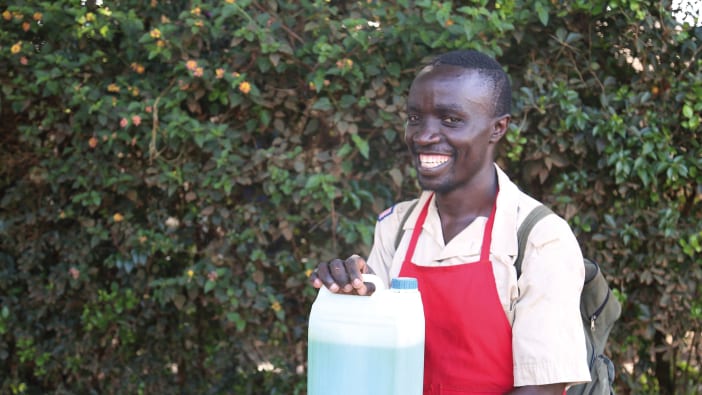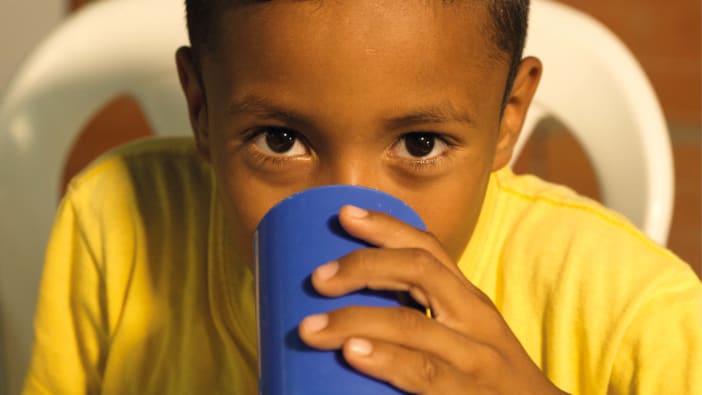by Markus Müller and Innocent Balagizi.
We opened a seminar about traditional medicine in Asmara, Eritrea with the question, ‘Do any of you have some experience with traditional medicine?’ There was a complete, even hostile, silence in the room. Finally some participants said, ‘We are Christians. We have nothing to do with it.’
We then presented a Datura stramonium plant that we had picked just in front of the training centre, and explained how we use it in hospitals in Congo. Suddenly the audience came back to life again. Everybody knew this plant. We learned that it was used in the families of the participants for many ailments, ranging from toothache to abscesses and abdominal cramps. In the end, we talked for over an hour just about the uses of this plant!
Such a strong reaction to traditional medicine is found frequently in many parts of the world. In Uganda, a patient told me, ‘We all use it but we do not like to talk about it, at least not in front of a missionary doctor.’
What is traditional medicine?
Part of the problem is that this is a complicated subject. There is no one, clear definition of traditional medicine. However, there is a huge variety of methods used to treat diseases. These methods are based on personal experience or on knowledge shared over many generations. Although there might be some good evidence from scientific research for the effectiveness of traditional medicines, people use traditional methods mainly because of their own experience based on their own observations. This is, in fact, the only common feature of all the different methods of disease treatment that we call traditional medicine.
To help our understanding, it may be useful to divide traditional medicine into three distinct groups:
Popular medicine From childhood, people use medicinal plants to treat ill health and diseases, often with great effectiveness. In eastern DR Congo, mothers from the Bashi people, for example, give two or three drops of squeezed leaves of Tetrademia riparia for their babies to drink in the case of abdominal cramps. To treat fever, people search for leaves of the tree Vernonia amygdalina (commonly known as ‘bitter leaves’) and to treat intestinal worms, the leaves of the small herb Celosia trigyna are used.
There are two things common to these treatments:
- They are provided and used by the patients or their family members.
- They are free of charge.
Observations about the use of these plants are exchanged freely between families and there are no secrets about their use.
Some medicinal plants are also used as food, others are only used medicinally.
The medicine of the traditional healers For special health problems that are difficult to treat, patients seek help from people who practice modern or traditional medicine.
Traditional healers are often specialists. Traditional birth attendants can be found in nearly every village. Other traditional healers are bone-setters or specialists in mental or chronic diseases. Often the work of the healers is not limited to physical health problems. Social and religious problems like conflicts between people, or conflicts between man and demons or gods, are often seen as the cause of diseases, and so the treatment involves religious or social procedures. Contrary to popular medicine, the treatment procedures of the healers are secret and cannot be discussed openly. They can only be transferred from generation to generation within the family of a healer and the healers must be paid for their work. The price of the treatment often depends on the social status of the patient. Payment is often made with goods such as chickens or goats.
In Christian circles, traditional healers are generally held in suspicion or even feared, because they may work with spiritual powers that are in conflict with Christian belief – but there are also healers like traditional birth attendants and herbalists who are well integrated in church communities.
Conceptual systems of traditional medicine There are also holistic systems of traditional medicine that are based not only on observation-based knowledge, but also on well-documented theories of the causes of ill health. Ayurveda in India, unani in Arab countries or Chinese traditional medicine are important examples of such systems.
Medicinal plants in primary healthcare
In many countries in the Tropics, people have little access to modern medicine. In the remote areas of NE DR Congo where we work, there is virtually no infrastructure for the transport of imported medicines, even if the majority of patients could afford them.
Given this background, we wondered if the local production of medicines from medicinal plants could be helpful. We started by using some well-known plants to treat common medical problems for which literature about dosage, effectiveness and side effects was available. Later we planted a garden of medicinal plants and, with the permission of the regional health authorities, we produced and used some herbal medicines when imported medicines were not available (see examples in the table on page 2). Most of these drugs were appreciated by patients and, as a result, several medicinal gardens were established, with tremendous community participation.
In the past few years, DR Congo has suffered very hard times. Some health centres have been completely looted. In such cases the local production of herbal medicines still continued and has enabled these centres to offer their services once again.
A forum of traditional and modern medicine
We have also encouraged a forum for traditional healers, medical doctors and nurses, health service administrators and political authorities. Here we discuss health problems, and the contributions to healthcare made by both traditional and modern medicine. Some points have been very sensitive. Medical doctors were sceptical about the effectiveness and possible side effects of traditional medicine, and questioned the ethics underlying this form of treatment.
The traditional healers had learnt, through experience, to be cautious, and did not want to have their treatment procedures investigated without the protection of their knowledge being guaranteed. To the surprise of the medical staff, they too complained about the poor ethical standards of modern medicine.
In particular, our work with Artemisia annua (from which a new group of highly effective anti-malarials was derived – see page 12) has helped encourage the full participation of all parties in this forum. In working together, we learned a lot from each other. We are convinced that, by improving co-operation between traditional and modern medicine, we shall make a significantly better contribution to healthcare than either could do alone.
Markus Müller is a medical doctor and worked for many years in DR Congo. He is now based at the German Institute of Medical Mission, PO Box 1307, D-72003 Tübingen, Germany.
Innocent Balagizi is a biologist working in Bukavu, DR Congo, with special emphasis on traditional medicinal plants. His address is BP 388, Cyangugu, Rwanda. In many countries, people have little access to modern medicine.









